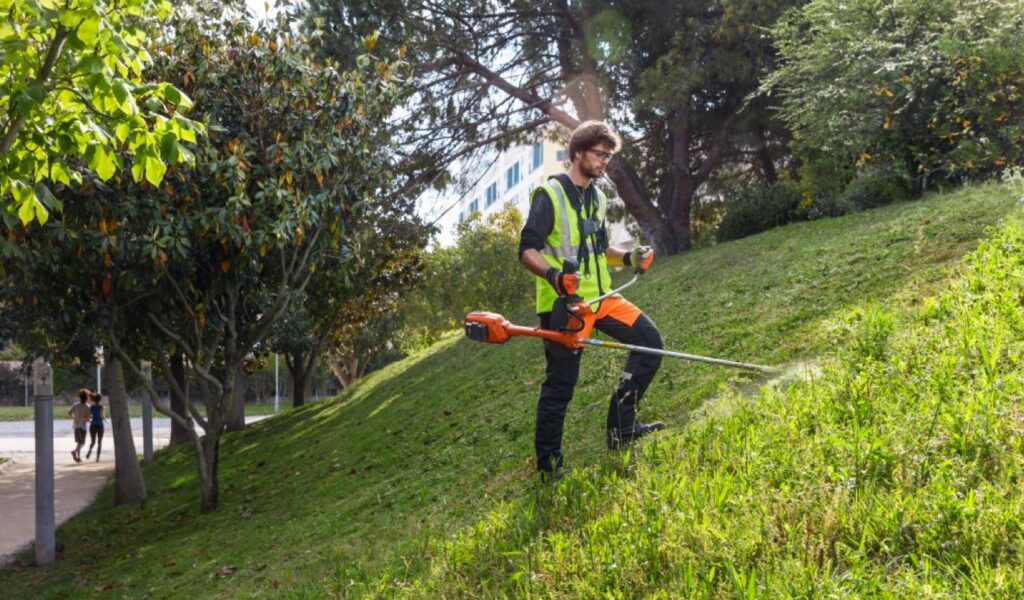Working techniques
In this chapter, we present a number of different techniques for different tasks. These will help you improve safety, efficiency and ergonomics.
CUTTING SHORT GRASS
Proper distance
Make sure no people or animals are too close when you are working. The recommended minimum distance is 15 meters.
Working direction, clipping debris direction
Make sure the grass clippings end up on the lawn while trimming. This will simplify the overall work and make cleaning up both easier and quicker.
Trimming around trees
To avoid damage to the tree trunk, use the edge of the guard as protection. Also, as a precaution, reduce speed as as you get closer to the stem.
Trimming around obstacles
To trim around obstacles efficiently, apply the 90/270-degree rule. Also, as a precaution, reduce speed when you are approaching the obstacle.
Cutting with a blade
By using the full diameter of the blade in each cut, the cutting capacity will be doubled without adding unnecessary strain to your work.
Recommended method
CUTTING LONG GRASS
Technique for collecting clippings
Move the clippings to one side with the blade angled. This makes the collection of the clippings easier.
Mowing high/rough vegetation
When the vegetation is very dense and tall it is recommended to cut the vegetation down in steps. This method will also reduce the size of the clippings and minimize the risk of vegetation winding around the gearbox.
Mowing along roads
Pay attention to the risk of objects flying onto the road. Choose a working direction so that grass and other objects are thrown away from the traffic/ road. Always keep an eye on the traffic, check relevant road signs, and obey local regulations.
Mowing bushes
To effectively cut down bushes, use a combination of vertical and horizontal cutting movement to reduce the bushes and to keep your cutting equipment clear from vegetation, while moving forward.
Mowing in ditches and slopes
Adjustments can be made to improve your ergonomics, for example by using the right working technique.
Adjust cutting equipment and guard to align with the slope.
Balance the bruschcutter. Raise the hip pad a bit.
WEED
Weed control on hard surfaces with trimmer head
Work with lower rpm’s to reduce the risk of flying objects. Choose a working direction so that grass and other objects are thrown away from the traffic/ road.
Weed scissor attachment
A weed scissor is suitable for environments where thrown objects need to be avoided, i.e. close to traffic, in confined areas or parking lots.
Always pay attention to traffic and your surrounding, control relevant road signs and obey local regulations during operation.
The weed scissor offers
Reduced risk of thrown objects
No flying debris
No clogging
The weed scissor attachment can also be used close to sensitive objects like young tree trunks that can easily be damaged when using trimmer line.
Trimming near to curbs, under wire fences or near house walls can be carried out effectively where the work with trimmer line could lead to time consuming stops caused by trimmer line breakage.
The weed scissor enables
Trimming close to sensitive objects
Trimming near to curbs, fences or walls
The weed scissor enables trimming and edging along e.g. sidewalks or golf bunkers. It is also suitable for trimming and edging in gravel, where conventional trimmer line would not be suitable.
The weed scissor is suitable for
Trimming and edging in grass and in gravel
